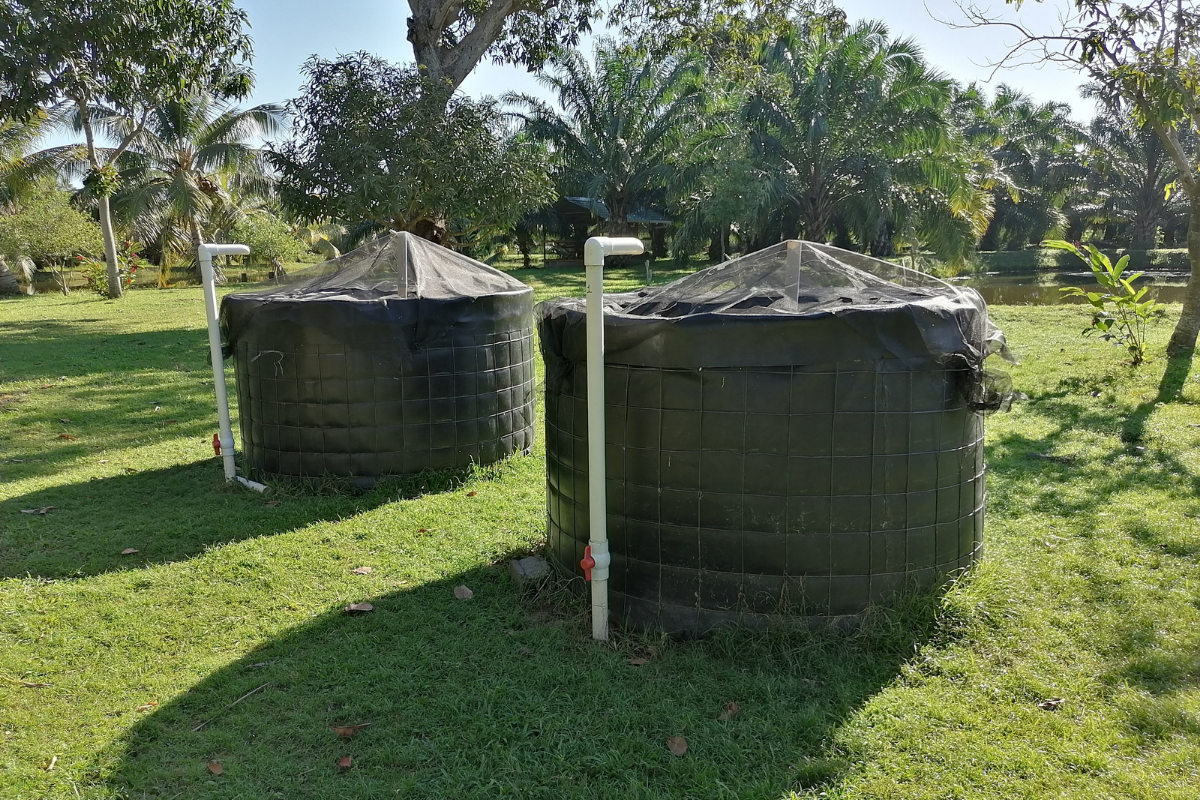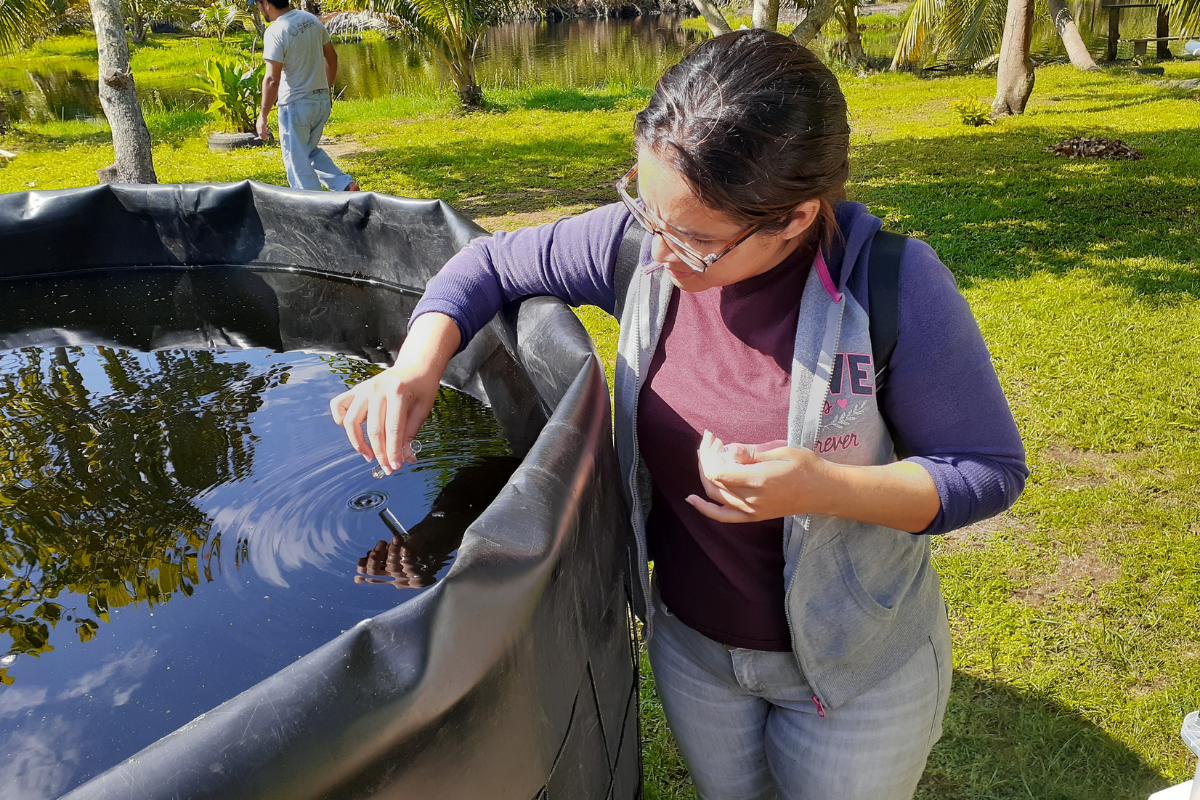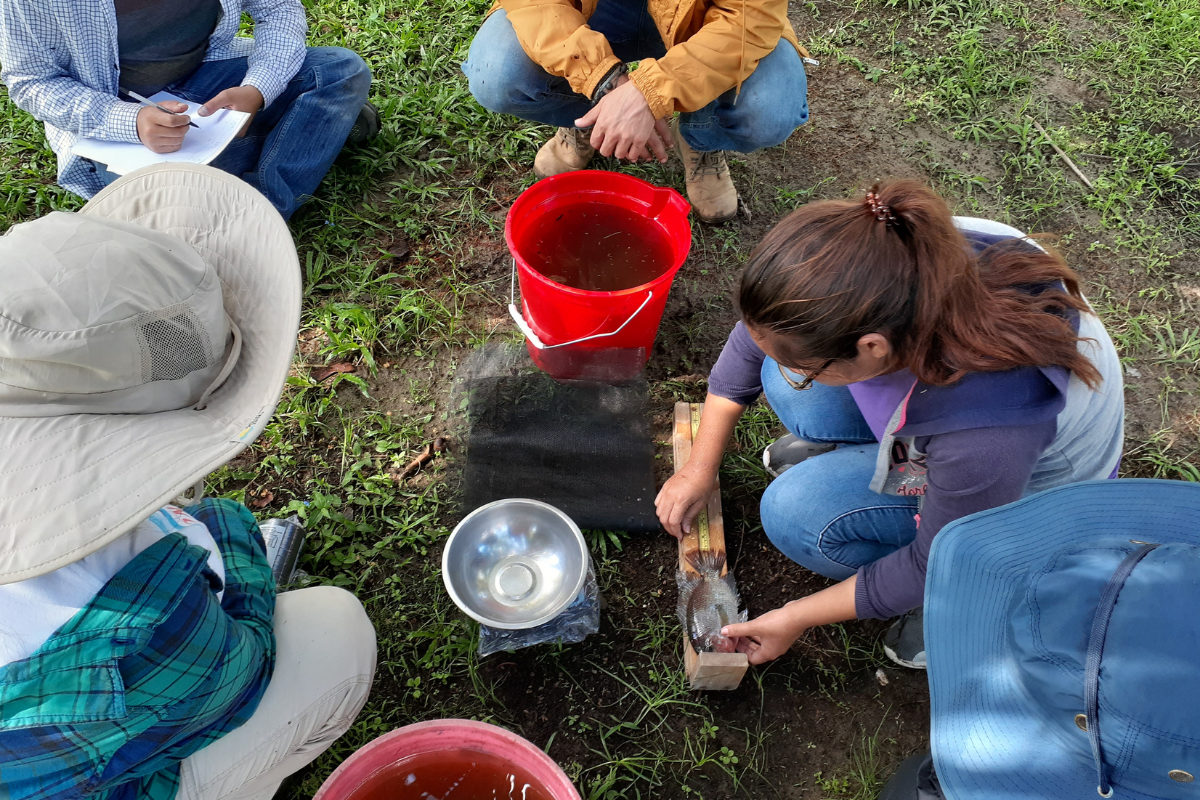Could aquaponics and aquaculture be a sustainable alternative to overfishing? According to Julio San Martin Chicas, our Principal Program Coordinator in Tela Bay, Honduras, the answer is yes: If specific fish can be adequately and competitively farmed using small-scale aquaculture, then we can alleviate fishing pressure on the reef.
Aquaculture refers to the practice of cultivating aquatic organisms, usually fish, under controlled conditions. Aquaponics is one step up—it introduces plants, such as leafy greens, into the aquaculture system. The nutrients derived from fish droppings fertilize the plants, allowing one to farm fish and grow food at the same time.
San Martin Chicas and Paula Urrutia, one of our community scientists in Tela, are testing the theory that aquaculture could be a more ecologically sustainable alternative to the continuous harvest of wild fish stocks. The team believes aquaculture can also reduce food insecurity and increase fisher income.

They setup a test system in early 2020, but then heavy rains hit Honduras and they learned the hard way that an aquaculture system should be covered—the freshwater changed the pH of the water and the fish died. Not long after, COVID-19 shelter-in-place orders began, and the project was put on hold. “After taking a break during COVID, we just started the system up again in January,” says San Martin Chicas.
San Martin Chicas and Urrutia are using the project as an opportunity to learn the ins and outs of running a local aquaculture system so they can turn around and teach fishers how to build their own systems at home.

“Our goal is to learn the fish lifecycle and how to commercialize it,” says San Martin Chicas. “We’re starting with aquaculture and hoping to grow it into a whole aquaponics system so that people can also grow their own food.”
A typical aquaculture system uses tilapia, a native fish of tropical and subtropical Africa and the Middle East. But growing tilapia would be a risky move in Tela. “If tilapia were to escape here, it would become invasive,” says San Martin Chicas. “Instead, we’re using a native fish that is from the tilapia family, called copetona, so that it doesn’t have the potential to threaten the ecosystem.”

Tela has been hit hard by overfishing over the years. Tela Bay sits adjacent to a lagoon, which is a popular fish nursery ground. CORAL works with fishers in the area to help relieve fishing pressure.
“Tela Bay is an area with lots of fishers and they rely on their fish,” says San Martin Chicas. “Trying to take them off fishing isn’t going to work because that style of work becomes their identity. The goal is to provide them with an income and take some of the pressure off the reef—it’s not going to eliminate fishing, but it can reduce the pressure and make it more sustainable.”
